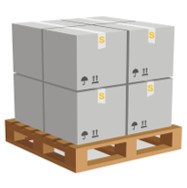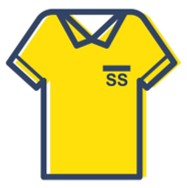
Traversing e-commerce clothing options can be tricky, especially in pursuit of the best-fitting piece. Separate from in-person retail where you can sample clothing, online orders tend to result in speculation about real-life appearance on your shape. On the bright side, stay optimistic! Leveraging practical insight and the correct aids, you can navigate virtual sizing and obtain clothing that complements your singular physique. Start off by learning your measurement numbers. It matters to record bust, waist, hips, and the inseam. Utilize a measuring tape to get accurate readings. Refer to the supplier’s sizing information without worry. Charts frequently outline detailed dimensions and their matching size indicators. Also, peruse customer testimonials. Customer experiences constitute an important resource for understanding real-world fit. Choose reviews that note sizing and contribute meaningful fit advice.
Breaking down standard sizes: explanation and use cases.
In design, fabrication, and ordinary life, common sizes fulfill a key role. Across furniture, clothing, and construction components, predefined measurements provide reliable consistency and compatibility. Grasping standard size implications and their applications helps ensure project success and reduces needless complications.
Commence by reviewing standard size names and their implications. One example: the common paper standard is an 8.5 by 11 inch document. This practice is widely embraced among different industries and supports printing and information flow.
- Equivalently, in garments, standard size tables give a reference for determining appropriate sizes from body measures like height, bust, and waist.
- Also, in furniture planning, familiarity with standard sizes is important for proper spatial arrangement.

Breaking down size charts: methods for accurate measurement.
Understanding size charts may feel like interpreting an encrypted message. Obscure size charts regularly cause shoppers to feel irritated. However, stay calm! By applying these convenient suggestions, you can accomplish precise measurements and stop poor fits. Begin with securing a trustworthy tape measure. Check that it’s supple enough to contour your figure accurately. Stand upright facing a mirror and relax to ensure the most exact measurements. Encircle the fullest part of your bust, ensuring the tape measure is parallel to the floor. Perform the same method for measuring waist above the navel and hip width at its broadest. Skip overly taut measurements – the tape should be snug without discomfort. Check the particular product’s sizing guide because brand measurements vary. Notice notes about body shape and the garment’s designed fit. Check your numbers against the chart and choose a size that reflects your measurements.Conquering online clothing sizes: decoding the subtleties.
Initiating a digital fashion shopping experience is exciting but frequently entails the precise challenge of understanding online garment sizes. Unlike physical stores permitting trials, online shopping necessitates greater care. Sizing charts provided by retailers offer valuable insights, yet they often lack the personalized touch of a fitting room experience. To enhance your fit success, analyze size charts attentively, align them with your measurements, and account for brand variation.
- Rely on reviews: shopper testimonials present pivotal guidance on garment sizing behavior.
- Gauge yourself correctly: using a soft tape measure and good mirror support ensures accuracy.
- Don’t assume your regular size will fit: variations across brands mean you should confirm each product’s chart.
Putting these tips into practice enables confident navigation of e-commerce sizing and a more satisfying purchase experience.
Chart essentials for sizes: interpreting XS to XXL.

Choosing the appropriate size occasionally presents a puzzle. Size tables are helpful tools for this issue! They share vital measurement information that supports choosing the correct size. Whether you shop online or offline, referencing the size chart is recommended. It ensures that your new purchase fits comfortably, so you can enjoy it without any discomfort. Here’s a brief explanation of typical size shorthand: * XS: Ultra Small * S: Moderate * M: Midsize * L: Large * XL: Size 10 * XXL: Double Extra Large Remember brand size charts differ, so always consult the particular Size chart for each product. Good luck shopping!
A guide to standard size apparel.
Standard clothing sizing can be tricky to understand. Brands and even styles inside a single brand frequently have noticeably different sizing. Such differences complicate the search for comfortable, well-fitting clothes. Luckily, there are practical pointers to improve managing standard clothing sizes. A key action is to review the size chart for every garment you contemplate buying. Avoid assuming your regular size will suffice. It helps to measure yourself and compare those figures against the chart. Note that sizing can change across seasons and between years. Therefore, always verify the size chart before making a purchase. In conclusion, adjust your size choice up or down if it’s appropriate. It’s preferable to have a good fit rather than clothing that’s too small or too large.Finding your perfect style: clothes that flatter your body type.
Regarding fashion, there isn’t a universal solution that fits everyone. Each figure is individual and should wear clothes that showcase its best features. Recognizing your silhouette helps you pick outfits that increase self-assurance.
- Start by measuring your bust, waist, and hip measurements.
- Think about your height and overall build.
- Note that these are guideline suggestions.

From screen to wardrobe: making online sizing straightforward.
Getting the perfect fit from internet purchases can be vexing. Typical sizing tables often induce guessing and elevate disappointment and returns. Still, don’t be alarmed! Cutting-edge e-commerce sizing technologies are altering shopping dynamics. Such systems use your body data and algorithms to recommend tailored fits so online previews match real life.
- End guessing and adopt certainty for improved online shopping.
- Secured with the correct size, enjoy your items without dealing with returns or bad fits.
Determining chest, waist, hips: precise measurement mastery.
Accomplishing a great fit depends largely on exact measurement procedures. Grasping upper body circumference, waist, and hip numbers is essential for flattering choices. To ensure precision, grab a flexible measuring tape and follow these steps: stand straight with your shoulders relaxed, wrap the tape measure around the fullest part of your bust, keeping it level across your back. Keep a note of the measurement in inches or centimeters. Then find your natural waistline (usually above the navel) and measure its circumference. Wrap up by placing feet together and encircling the tape at the hips’ widest part, making sure it’s level above the buttocks. Using these measurements, compare confidently to charts from various brands. Be aware sizes vary considerably among makers; consult more than one chart. Change size selection up or down if the garment’s fit warrants it.
Eliminate sizing headaches: a thorough guide to correct fitting.

Do inconsistent sizes leave your wardrobe feeling off and frustrating? Do sizing charts present a persistent challenge for you? We feel your frustration and assembled this thorough guide to help you beat sizing confusion and pick the right fit consistently.
- Get ready to access accurate sizing methods and tips on measuring yourself correctly.
- Research frequent sizing variations and tips for navigating them among brands and styles.
- Pinpoint the best size for varying categories like tops, bottoms, dresses, and outerwear.
Following our professional advice, leave sizing frustration behind and develop a wardrobe that fits well.
Selecting the ideal fit on every occasion.
When it comes to apparel, clothing one crucial factor is ensuring a proper fit. A snugly fitting outfit increases confidence and appearance, but an ill-fitting one can leave you feeling insecure and unhappy. Luckily, choosing the right size need not be an overwhelming task. Try these practical pointers: * Use the brand’s provided size chart for reference. * Take your body measurements accurately. * Do not depend solely on your habitual size. Consider the fabric and its potential for stretch. * When on the fence about size, choose the larger for comfort. You may modify the garment later through tailoring if needed.